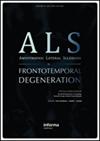经皮内窥镜胃造口术、体重减轻和肌萎缩性侧索硬化症患者的生存率:一项基于人群的登记研究
IF 2.8
4区 医学
Q2 CLINICAL NEUROLOGY
Amyotrophic Lateral Sclerosis and Frontotemporal Degeneration
Pub Date : 2017-01-11
DOI:10.1080/21678421.2016.1270325
引用次数: 30
摘要
目的:评估经皮内镜下胃造口术(PEG)植入术及其时机对ALS患者生存的影响,并在以人群为基础的研究中研究植入术前后的预后因素。方法:在这项以人群为基础的观察性登记研究中,我们招募了新诊断为ALS的患者,根据El Escorial修订标准,这些患者居住在艾米利亚罗马涅地区,并且出现严重的吞咽困难需要肠内营养支持。主要结局指标是PEG推荐后无气管切开术生存率。结果:在Emilia Romagna登记的545例ALS患者的事件队列中,有210例患者需要PEG,这些患者在2009年至2013年间被诊断为ALS。193例患者被纳入研究,其中17例因在放置PEG时已经气管造口而被排除。在纳入研究的193例患者中,152例接受了PEG, 41例未接受手术。在符合条件的患者中,未接受PEG的患者与接受气管切开术的患者具有相同的无气管切开术生存率(25个月对32个月,p = 0.21)。接受PEG植入的患者比未接受PEG植入的患者无气管切开术生存率更高(6个月vs 2个月,p = 0.008)。置PEG后气管无造口的中位生存期为8个月(95% CI5-12);植入PEG后30天生存率为89.60%。在Cox多变量分析中,PEG植入后的死亡或气管造口的危险显著受到PEG植入时BMI与诊断时BMI差异的影响(HR 1.05, 95% CI 1.02-1.08;p = 0.002)。死亡或气管切开术的危险不受PEG插入时间的影响。结论:本研究虽然存在一定的局限性,但表明对于接受PEG植入的患者,从推荐使用PEG开始,无气管造口生存期增加,并且在接受PEG的患者中,如果在体重明显减轻之前植入PEG,并且如果营养支持可以避免进一步的体重减轻,生存率会更高。如果这种预防体重减轻和更好的临床结果之间的联系被进一步的研究证实,它将对疾病管理具有重要意义。本文章由计算机程序翻译,如有差异,请以英文原文为准。
Percutaneous endoscopic gastrostomy, body weight loss and survival in amyotrophic lateral sclerosis: a population-based registry study
Abstract Objective: To assess the role of percutaneous endoscopic gastrostomy (PEG) insertion, and its timing, on ALS survival, and to study prognostic factors of survival before and after PEG placement in a population-based setting. Methods: In this observational population-based, registry study, we enrolled patients with newly- diagnosed ALS, according to the El Escorial revised criteria, who were resident in the Emilia Romagna Region, and who developed severe dysphagia needing enteral nutritional support. The primary outcome measure was tracheostomy-free survival after PEG recommendation. Results: There were 210 patients needing PEG, out of an incident cohort of 545 patients from the Emilia Romagna Registry for ALS, who were diagnosed between 2009 and 2013. One hundred and ninety-three patients were included in the study, and 17 were excluded because they were already tracheostomized at the time of PEG placement. Of the 193 patients included in the study, 152 underwent PEG, whereas 41 did not undergo the procedure. Patients who did not undergo PEG, among the eligible ones, had the same tracheostomy-free survival from onset as patients who did (25 vs. 32 months, p = 0.21). Tracheostomy-free survival from PEG recommendation was greater in patients who underwent PEG placement than in patients who did not (6 vs. 2 months, p = 0.008). Median tracheostomy-free survival from PEG insertion was eight months (95% CI5–12); 30 days after PEG placement, survival was 89.60%. At Cox multivariable analysis, the hazard of death or tracheostomy after PEG insertion was significantly influenced by the difference between BMI at the time of the PEG procedure and BMI at diagnosis (HR 1.05, 95% CI 1.02–1.08; p = 0.002). The hazard of death or tracheostomy was not affected by the timing of PEG insertion. Conclusions: The present study, although it has some limitations, suggests a gain of tracheostomy-free survival from the time of PEG recommendation for patients who undergo PEG placement, and, among patients who undergo PEG, a greater survival if PEG is inserted before a significant weight loss occurs, and if nutritional support avoids further weight loss. Should this association between prevention of weight loss and better clinical outcome be confirmed by further studies, it would have important implications for disease management.
求助全文
通过发布文献求助,成功后即可免费获取论文全文。
去求助
来源期刊

Amyotrophic Lateral Sclerosis and Frontotemporal Degeneration
CLINICAL NEUROLOGY-
CiteScore
5.40
自引率
10.70%
发文量
64
期刊介绍:
Amyotrophic Lateral Sclerosis and Frontotemporal Degeneration is an exciting new initiative. It represents a timely expansion of the journal Amyotrophic Lateral Sclerosis in response to the clinical, imaging pathological and genetic overlap between ALS and frontotemporal dementia. The expanded journal provides outstanding coverage of research in a wide range of issues related to motor neuron diseases, especially ALS (Lou Gehrig’s disease) and cognitive decline associated with frontotemporal degeneration. The journal also covers related disorders of the neuroaxis when relevant to these core conditions.
 求助内容:
求助内容: 应助结果提醒方式:
应助结果提醒方式:


